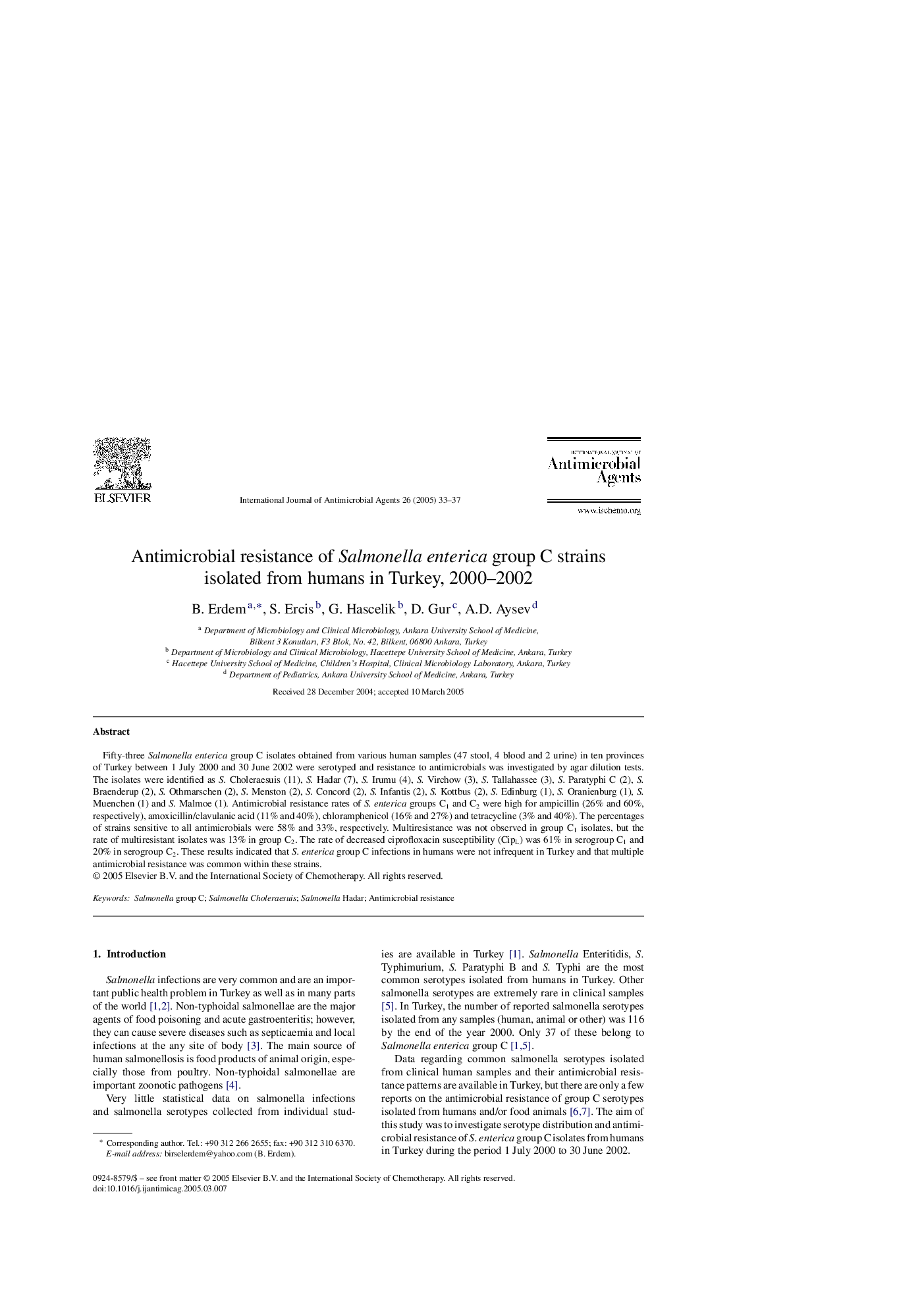| Article ID | Journal | Published Year | Pages | File Type |
|---|---|---|---|---|
| 10027776 | International Journal of Antimicrobial Agents | 2005 | 5 Pages |
Abstract
Fifty-three Salmonella enterica group C isolates obtained from various human samples (47 stool, 4 blood and 2 urine) in ten provinces of Turkey between 1 July 2000 and 30 June 2002 were serotyped and resistance to antimicrobials was investigated by agar dilution tests. The isolates were identified as S. Choleraesuis (11), S. Hadar (7), S. Irumu (4), S. Virchow (3), S. Tallahassee (3), S. Paratyphi C (2), S. Braenderup (2), S. Othmarschen (2), S. Menston (2), S. Concord (2), S. Infantis (2), S. Kottbus (2), S. Edinburg (1), S. Oranienburg (1), S. Muenchen (1) and S. Malmoe (1). Antimicrobial resistance rates of S. enterica groups C1 and C2 were high for ampicillin (26% and 60%, respectively), amoxicillin/clavulanic acid (11% and 40%), chloramphenicol (16% and 27%) and tetracycline (3% and 40%). The percentages of strains sensitive to all antimicrobials were 58% and 33%, respectively. Multiresistance was not observed in group C1 isolates, but the rate of multiresistant isolates was 13% in group C2. The rate of decreased ciprofloxacin susceptibility (CipL) was 61% in serogroup C1 and 20% in serogroup C2. These results indicated that S. enterica group C infections in humans were not infrequent in Turkey and that multiple antimicrobial resistance was common within these strains.
Related Topics
Life Sciences
Immunology and Microbiology
Applied Microbiology and Biotechnology
Authors
B. Erdem, S. Ercis, G. Hascelik, D. Gur, A.D. Aysev,
